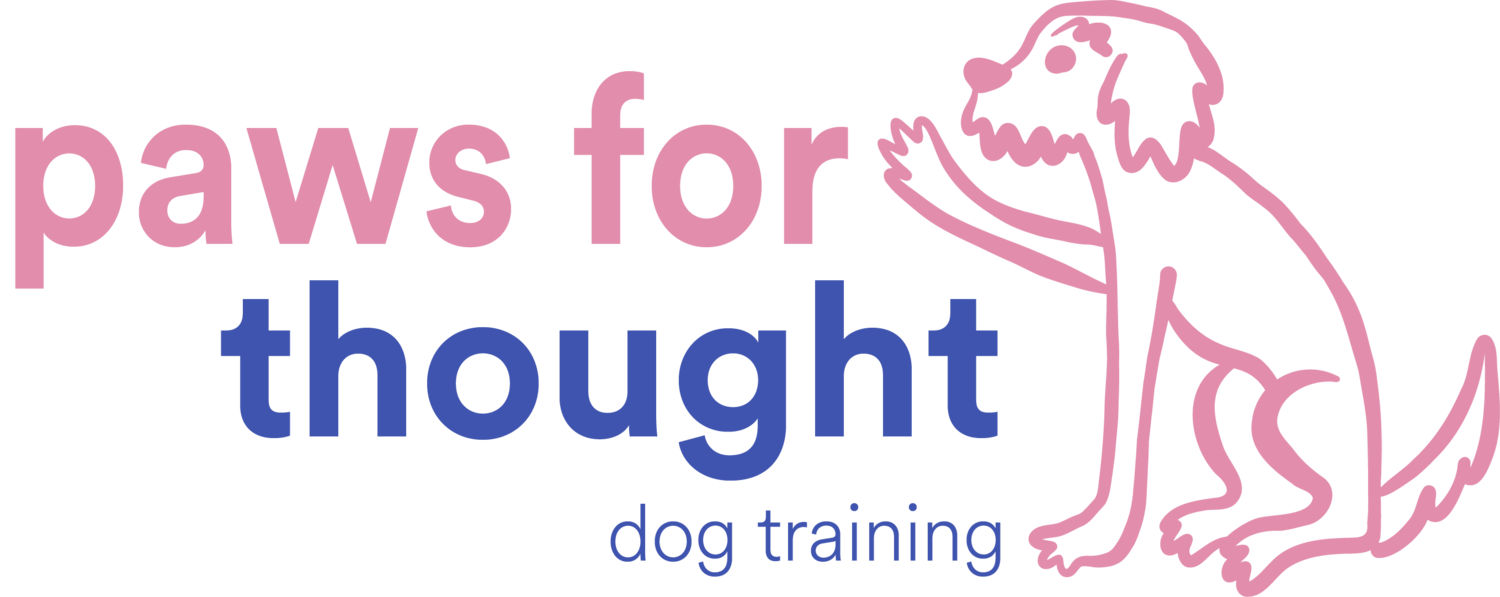How to Utilize Enrichment and Exercise to Meet Your Dogs’ Needs
Many of the dogs in our lives are sadly lacking engagement and stimulation from conspecifics (other dogs), the environment, and even their own guardians. Dogs evolved alongside humans as scavengers. They regularly faced challenges related to finding their next meal and navigating the social interactions between canines and humans. Today, many of our dogs spend the majority of the day in our homes with nothing to do aside from a few walks a day. This unfortunate reality may impact a dog’s likelihood to develop behavior issues. In order to avoid this we recommend implementing an exercise and enrichment schedule that allows dogs to perform species-specific behaviors and meet their engagement and stimulation needs.
Enrichment
Enrichment is the utilization of species-specific behaviors during activities. Great forms of enrichment capitalize on a dog’s senses (smell, sight, sound, touch) and involve some amount of cognitive effort. Research suggests that enrichment results in decreased stress behaviors and increased relaxation behaviors (Hunt et al., 2022).
Food-based Enrichment
Work-to-eat toys take advantage of our dog’s natural foraging behaviors. We recommend that you feed your dog out of WTE toys for every meal!
WTE toys - check out our blog post for recommendations
Edible chews also provide your dog with legal outlets for chewing. The repetitive motion of chewing is soothing for dogs and as a bonus helps to keep their teeth clean.
Chews - check out our blog post for recommendations
Social Enrichment
As they evolved alongside us, dogs developed specialized abilities to read our body language, attune to our voices, and follow our eye focus. Getting silly with your dog allows us to engage in a manner that reinforces our relationship and builds our bond.
Dogs are also incredibly social with each other. Allow them to express natural, conspecific play through playdates and off-leash dog play. Make sure your dog is enjoying these play interactions by checking out our play resources.
Sensory Enrichment
Utilize your dog’s fantastic sense of smell through nosework - a game in which your dog is required to search out something that’s hidden. This can be a relaxing activity for a dog and a great way to introduce nervous dogs to new environments.
Visual stimulation is great for dogs who are not overly aroused by moving stimuli. For some, this might mean going to a park to watch the squirrels or having access to a window.
Exercise
Exercise can be considered a form of enrichment. Exercise for dogs is associated with increased physical exertion that results in elevated heart rate and panting. Walks in the city are most often not considered to be exercise.
Toy Play
Toy play is a great way to exercise your dog as long as it doesn’t become too repetitive or arousing.
Games like fetch and tug are great to increase a dog’s exercise daily. We recommend asking for basic skills such as touch, sit, down, etc in between toy play reps. This can help to keep arousal levels down and avoid too many repetitive movements. Get creative with it!
A Flirt Pole is another great way to play with your dog using toys. This can be particularly helpful for herding breeds who need a chasing outlet.
Body Conditioning
Working to improve your dog’s musculoskeletal system is a fantastic way to exercise your dog. Just as when we return tired from the gym, these skills can both benefit your dog’s overall health and exercise them.
Beneficial body conditioning skills include: sit, down, stand, bow, backup, pivot
If you have never taught these before and would like to learn how to schedule a session with a private trainer!
Off-leash Adventures
If your dog has a strong recall cue and is reliable at performing skills when around distractions, we highly recommend taking them on hikes and to public spaces that allow off-leash dogs. Allowing them to move freely and gain sensory information from their environment is about as enriching as an activity can get. If your dog doesn’t have a reliable recall you can replicate off-leash benefits using a long-line.
Building an Athlete
Be wary of over-exercising your dog. This can cause unnecessary stress on their system and result in not having enough time to rest which may result in hormone imbalances. The other negative of over-exercising your dog is that their body can become conditioned to the amount of exercise. In the future, they will require more and more exercise to adequately meet their needs.
Read the article Building an Athlete by Sean O’Shea which details the negative effects of overexercising your dog


